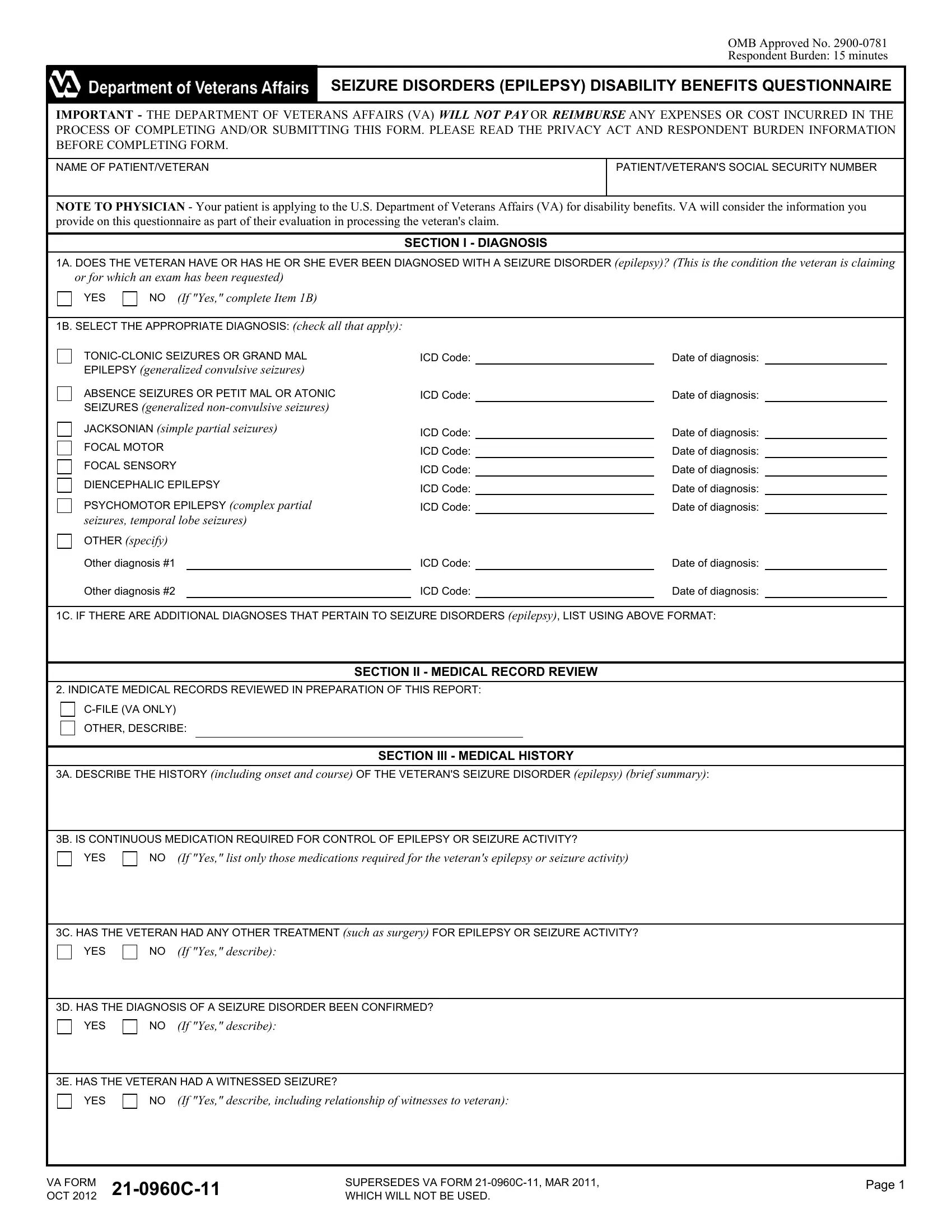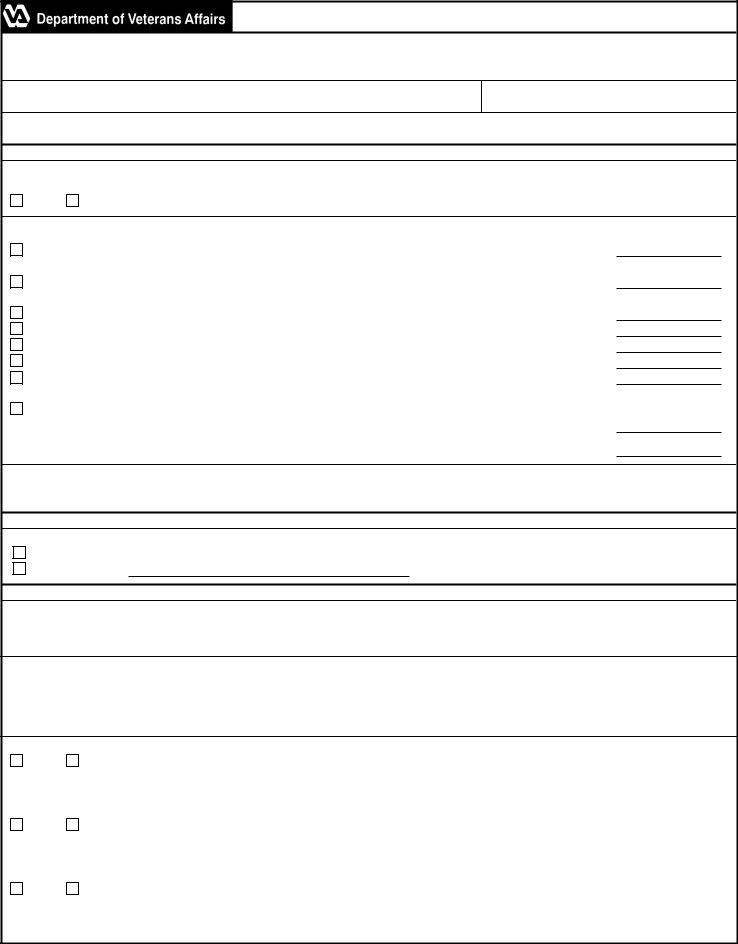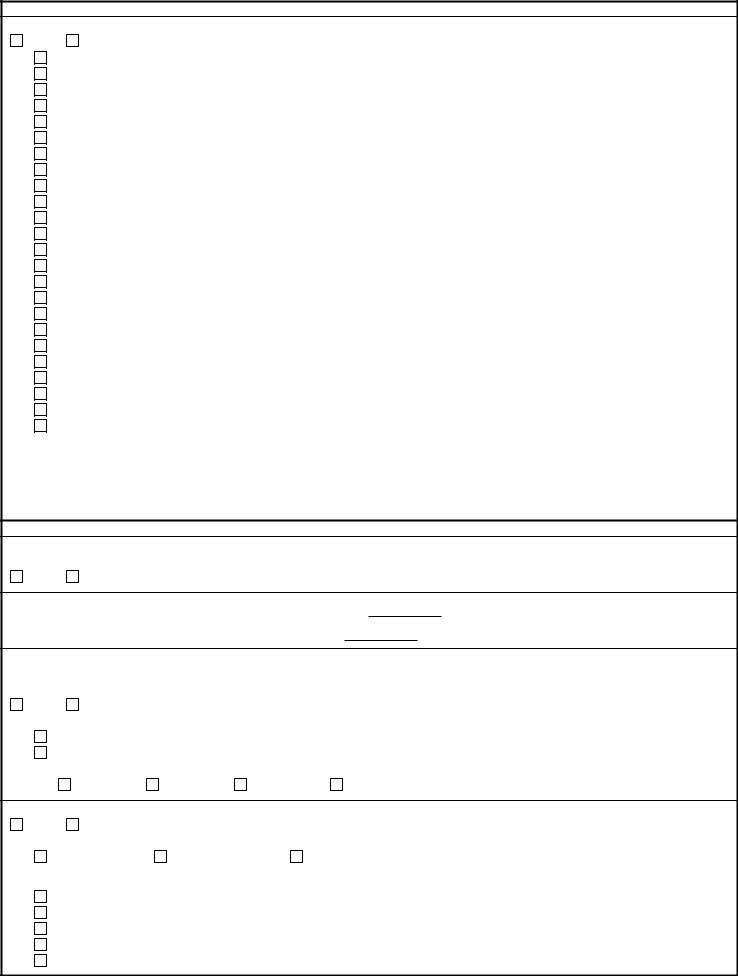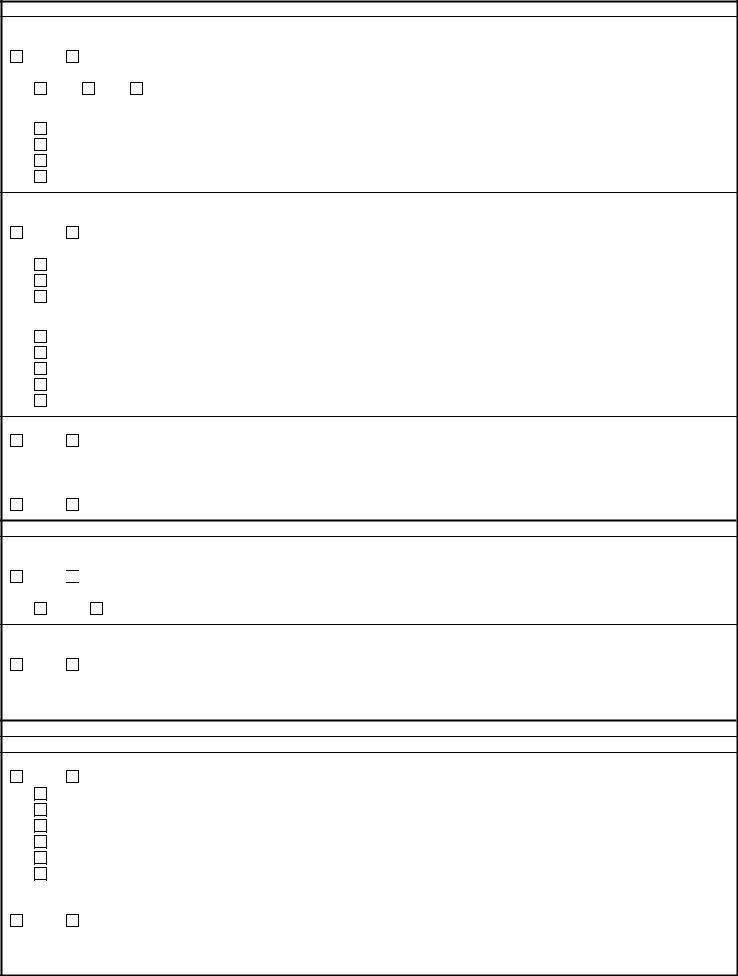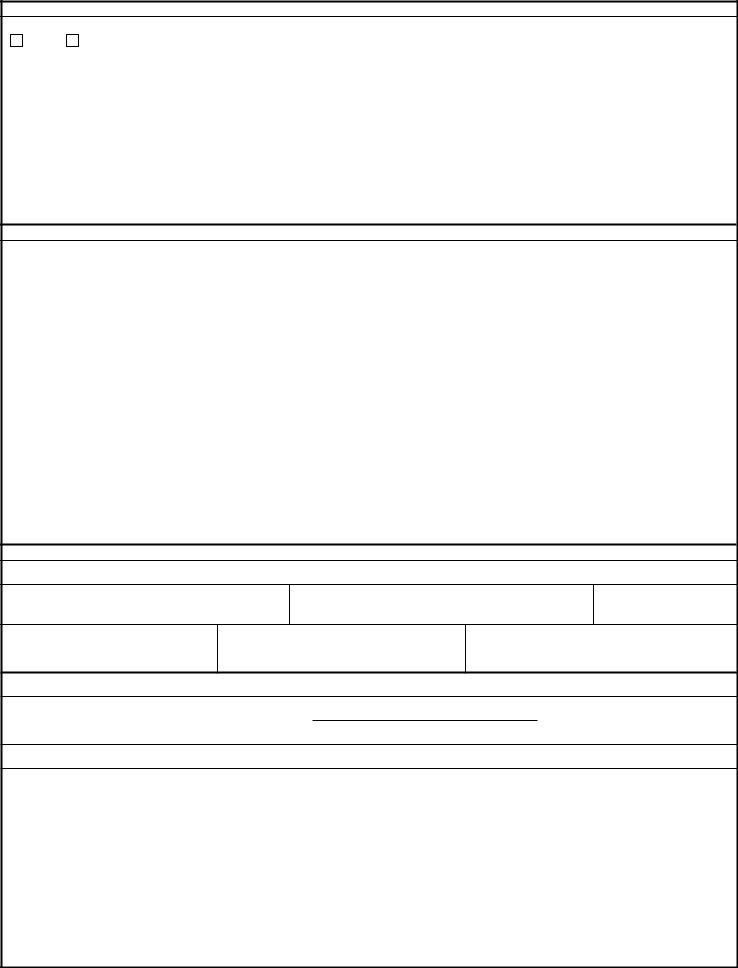Using PDF forms online is a piece of cake using our PDF tool. Anyone can fill in 1975 here in a matter of minutes. To make our editor better and more convenient to work with, we consistently come up with new features, with our users' suggestions in mind. Starting is simple! Everything you should do is follow these easy steps down below:
Step 1: Press the "Get Form" button above. It is going to open up our pdf editor so you could start filling out your form.
Step 2: With our state-of-the-art PDF file editor, you're able to do more than just fill out blanks. Try each of the functions and make your docs look great with custom textual content incorporated, or adjust the original content to excellence - all comes along with the capability to insert any kind of photos and sign it off.
In an effort to complete this form, be sure you type in the necessary details in each area:
1. While filling out the 1975, ensure to incorporate all of the needed blanks within the relevant area. It will help speed up the work, enabling your information to be handled promptly and accurately.
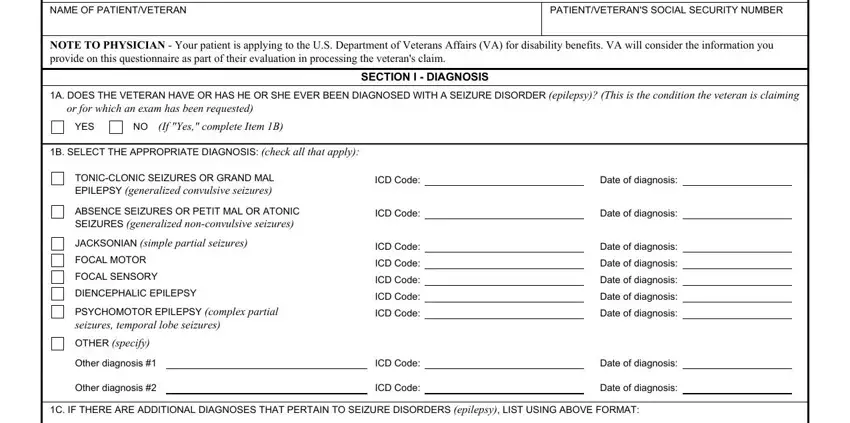
2. Soon after filling in this section, go to the next stage and fill out the necessary particulars in these blanks - INDICATE MEDICAL RECORDS REVIEWED, CFILE VA ONLY, OTHER DESCRIBE, A DESCRIBE THE HISTORY including, SECTION III MEDICAL HISTORY, B IS CONTINUOUS MEDICATION, YES, If Yes list only those medications, C HAS THE VETERAN HAD ANY OTHER, YES, If Yes describe, D HAS THE DIAGNOSIS OF A SEIZURE, YES, NO If Yes describe, and E HAS THE VETERAN HAD A WITNESSED.
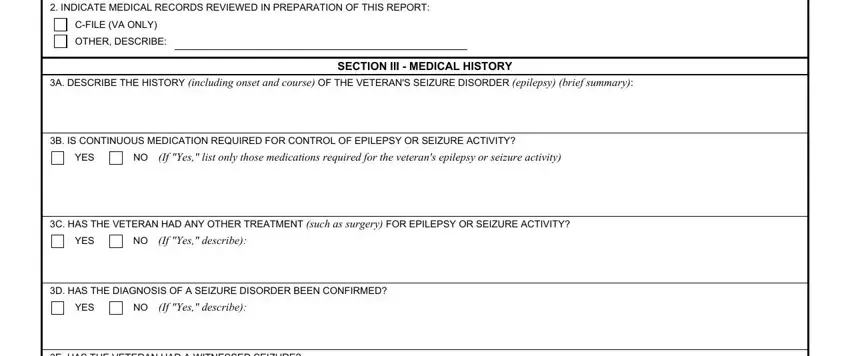
People frequently make errors when filling out INDICATE MEDICAL RECORDS REVIEWED in this part. You should reread everything you type in right here.
3. In this specific stage, take a look at E HAS THE VETERAN HAD A WITNESSED, YES, NO If Yes describe including, VA FORM OCT C, SUPERSEDES VA FORM C MAR WHICH, and Page. Each one of these will have to be completed with greatest accuracy.

4. The fourth section comes next with the next few form blanks to enter your specifics in: DOES THE VETERAN HAVE OR HAS HE, YES, If Yes check all that apply, Generalized tonicclonic convulsion, Episodes of unconsciousness, Brief interruption in, Episodes of staring, Episodes of rhythmic blinking of, Episodes of nodding of the head, Episodes of sudden jerking, Episodes of sudden loss of, Episodes of complete or partial, Episodes of random motor movements, Episodes of psychotic, and Episodes of hallucinations.
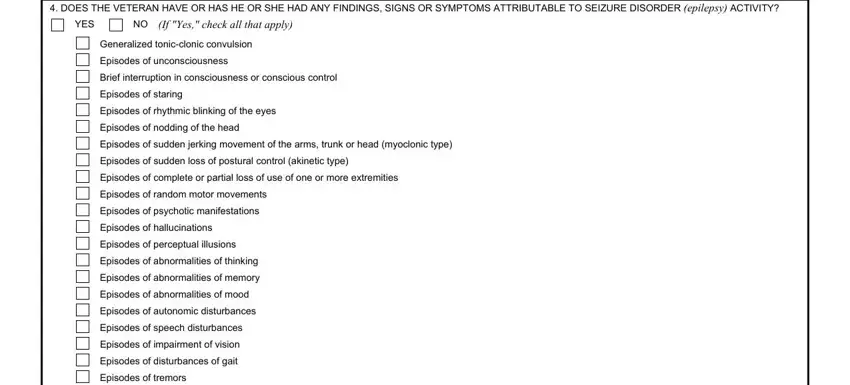
5. And finally, the following final part is precisely what you will have to finish before finalizing the PDF. The blank fields here include the next: Episodes of visceral manifestations, Residuals of Injury during seizure, Other, For all checked conditions describe, A DOES THE VETERAN HAVE OR HAS HE, SECTION V TYPE AND FREQUENCY OF, SEIZURE ACTIVITY, YES, If Yes complete Items B through H, B PROVIDE APPROXIMATE DATE OF, PROVIDE DATE OF MOST RECENT, C HAS THE VETERAN EVER HAD MINOR, blinking of the eyes or nodding of, YES, and If Yes complete the following.

Step 3: Revise the details you've typed into the blanks and click the "Done" button. Get your 1975 after you register here for a free trial. Easily access the document from your personal cabinet, together with any modifications and changes all preserved! FormsPal ensures your data privacy via a secure system that never records or distributes any private data involved. You can relax knowing your paperwork are kept protected each time you work with our editor!
